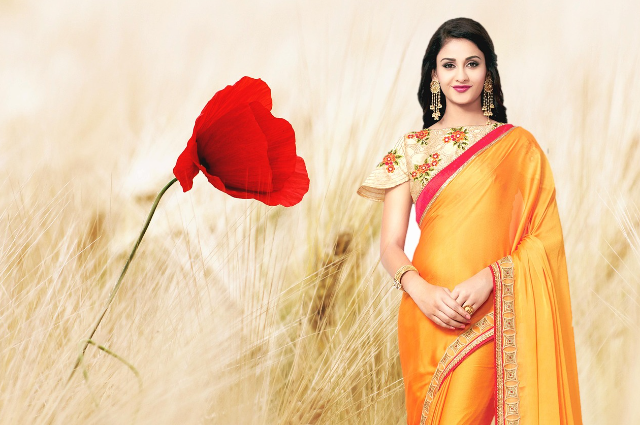
The spatial patterns of ethnic fashion development are complex and dynamic, similar to clothing. Fashion, in its essence, maps the collection of geography, migration, culture, technology, and trade. Regional dress- either African Kente-Cloth, Japanese kimono, or India’s rich sari anchors society in historical identity, but the effects that run ethnic fashion are anything but stable. Instead, these styles develop in attractive, overlapping spatial patterns, frequent migrations, cultural exchange, technological innovation, global markets and cultural authenticity are prepared by assignments.
For example, in Asia, traditional dress has been influenced by the Indian Saree or the Chinese Cheongsam for centuries by social history, textile innovation, and environmental adaptation. Saree woven in the everyday lives of millions of people in India shows remarkable spatial differences: from silk saris of Kanchipuram in the south to the strong, hand-loaded cotton in the West -Bengal. The style of each region knows different local identity, climate-driven drug options, and how the craftsmen are led from generation to generation. Still, when India experienced the waves of colonialism, freedom, and especially subsequent globalization after the 1990s, these spatial boundaries became blurred. Migration and travel allowed not only to travel with communities for saris forms and draping styles, but also easy to be eastern hybrids such as metallic ornament, or urban cosmopolitan taste seen in western evening materials for the introduction of cross-cultural elements.
Globalization further accelerates this difference. When individuals or migration in society, the traditional dress often becomes an heritage scene in the new country. South Asian migrant communities in the UK or the United States have continued to wear everything and Salwar-kameez. Some times for the availability of local clothing or also to combine them with western goods. For example, the Punjabi suit, in the late 1990s, became an important ethnic fashion declaration, which affected wide -style trends and forms new, locally different pockets of ethnic fashion in western cities.
Fashion points such as Paris, London and New York have served as nodes where ethnic styles and rehabilitation around the world. Designers such as Drive Van Noten, Vivienne Tam and Kenzo have borrowed famous for resonance collections from multicultural history to globally. Kimono has inspired everything from high-fashion silhouette to modern streetwear forms. African patterns, such as Ghana’s Kente or Nigerian Ankara pressure, jumped from local rituals and ceremonies, and were included by key designers seeking their visual dynamics and cultural symbolism.
However, spatial currents are not helpful. While Western designers draw on non-Western motifs, modern designers in Asia, Africa, and Latin America incorporate traditional crafts with urban, global trends. This “Fusion Wear” is clear in Indian Cape Saris, the ethnic bombing jacket includes tribal embroidery, or African wax pressure used for modern dresses. These hybrid textiles reflect new spatial realities: Sometimes connections between rural craftsmen, urban designers, and global markets. The rise of social media means that these developed styles are immediately visible to the public around the world, which helps regional innovations jump over spatial borders overnight.
Market data underlines this rapidly shifting geography. In 2024, the Asia Pacific led the ethnic wear market, with more than 60% of the global stock, priced at around $ 60 billion. Demand is the strongest during festivals, weddings and cultural programs, and shows how space and cultural time converts to run ethnic fashion. The ethnic fashion of women dominates, which is more than 70% market share, with merger styles between urban, young consumers. While the anchors in traditional wear and tear areas – still dominate, modern fusion is a global runway – storm, especially designers and consumers grow rapidly experimental.
Technology plays an important role in this development. For centuries, handloom and artisan techniques defined the geography of ethnic fashion, where the whole city specializes in a special craft, as seen in Banarasi Silks in Varanasi or Shibori colored in Japan. Today, digital design, AI pattern production, and e-commerce platforms carry these spatial boundaries. Advanced generic designs – traditional patterns kill nerve rights with grammar – start repeating and resuming indigenous motives, increasing access, but also questions about authenticity and intellectual property. Designers can now make embroidery from Kutch, digital patterns from Africa south of Sahara and silk from China, orchestrated a new geography of production and consumption.
Still, the spatial journey to ethnic fashion is not just about spreading and mixing; It also includes conscious revival and protection. With globalization, the opportunity for cultural impairment has inspired designers and consumers to renew their interest in indigenous clothing and methods, which gives rise to “slow fashion” and the protection of artisan groups. The initiative to point to the catalog and geographical traditional craftsmanship (such as India’s GI tag for Banarasi saris) is the same about protecting craftsmen tied to a region of marketing inheritance in a global world.
The site of ethnic fashion Is therefore the story of both inertia and dynamics. In Mexican cities, Otomi embroidery is now modern blazers sold all over the world. In Tokyo, the centuries-old Indigo-Runi Yukata brands are known for their high quality. In New York, the runway models mix the Maasai Beadwork with modern road styles; Their appearance is viral, which affects the trends widely in the form of Lagos and Mumbai. Each case represents a trip -sometimes traditional dress is preserved as a living heritage, sometimes it is metamorphosed, urban lifestyle, climate change, reacts to organic imperatives, and over these, the discovery of identity in a paired world.
Since the global ethnic fashion market reaches $ 185 billion in the early 2030s, more than 6%have been estimated with annual growth, local tradition and global impact will only intensify. Each festival, migrant communities, fashion week, and social media posts change the maps, celebrating the unique spatial story of the ethnic dress, and connecting distant areas to new combinations. Finally, the spatial pattern of ethnic fashion is a reflection of humanity’s ability to merge inheritance with innovation and to express recognition in the global scenario.
References
